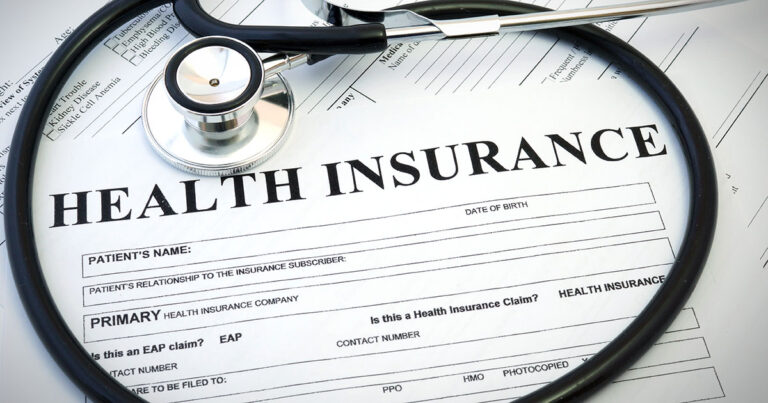Dental Insurance: A Complete Guide to Protect Your Smile and Your Wallet
A healthy smile is about more than just looking good in photos. Your dental health is directly linked to your overall well-being, and ignoring it can lead to serious and costly medical issues. Studies have shown that gum disease is connected to heart disease, diabetes, and even respiratory illnesses. Yet dental care is often one of the most overlooked areas when it comes to insurance planning.
This is where Dental Insurance comes in. It helps reduce the financial strain of routine checkups, preventive care, and more advanced procedures. Without it, even simple treatments can add up to hundreds or thousands of dollars, which can make people delay or skip care altogether.
In this guide we will break down what dental insurance is, how it works, what it covers, and how to choose the right plan. The goal is to help you understand your options and make a smart decision for both your oral health and your budget.
What is Dental Insurance and Why It Matter?
Dental Insurance is a type of health coverage specifically focused on oral care. It works in a similar way to medical insurance, but the benefits, coverage limits, and cost-sharing arrangements are unique to dental needs.
Why it matters is straightforward. Preventive care keeps dental problems from escalating into more serious and expensive conditions. Without insurance you might avoid regular checkups or necessary treatments because of the cost, which can lead to tooth loss, infections, or even hospitalizations.
Many people assume dental insurance is just for those with major dental issues, but it is actually more valuable when used for prevention. A simple cleaning today can prevent a costly crown, root canal, or gum surgery later.
How Dental Insurance Works
Dental insurance might sound complicated at first, but once you understand the basics, it becomes much easier to navigate. Whether you get coverage through your employer, buy it yourself, or access it through a government program, most dental insurance operates on a cost-sharing model. In simple terms, you and your insurer share the costs of care.
The main pieces of this puzzle are premiums, deductibles, copayments, coinsurance, and annual maximums. Premiums are the monthly payments you make to keep your coverage active. The amount varies depending on the plan, the level of coverage, and whether the policy comes through an employer group or an individual purchase.
Deductibles are the amount you pay out of pocket before your insurance begins covering certain services. Preventive care like cleanings and exams is often covered even if you have not met your deductible. Copayments and coinsurance are your share of the costs for dental procedures. Sometimes this is a flat fee, like twenty dollars for a filling. Other times it is a percentage of the total bill.
Annual maximums are the ceiling on how much your insurance will pay in a single benefit year. Most dental plans set this limit between one thousand and two thousand dollars. Once you hit the maximum, you are responsible for all additional costs until the new benefit year starts. Understanding these components helps you know what to expect before you walk into the dentist’s office.
Common Categories of Dental Coverage
Most dental insurance follows what is often called the 100-80-50 model. This breakdown makes it easier to see how much coverage applies to different types of treatments.
Preventive care such as exams, cleanings, fluoride treatments, and routine X-rays is usually covered at 100 percent. Insurers do this because preventing cavities or gum disease costs far less than treating advanced dental problems later. Basic procedures like fillings, simple extractions, and some periodontal treatments are often covered at around 80 percent. That means you typically pay the remaining 20 percent out of pocket.
Major procedures such as crowns, bridges, dentures, root canals, or surgical extractions usually fall under 50 percent coverage. These treatments can be expensive, so your share of the cost is higher. By keeping this structure in mind, you can better plan your dental visits and budget for expenses.
Key Differences Between Dental Insurance and Health Insurance
Although dental insurance and health insurance look similar on the surface, they work very differently once you dig deeper. The scope of coverage is the first difference. Dental insurance focuses only on oral health, while health insurance covers a broad range of medical issues.
Annual limits are another key distinction. Most dental insurance policies have a maximum yearly benefit that is much lower than what you see in health insurance, typically around one to two thousand dollars.
Dental insurance is also built around prevention. That is why most plans fully cover checkups and cleanings. The idea is that regular preventive care reduces the need for costly procedures later. Finally, the way you use the insurance is different. Dental insurance is often used multiple times a year for routine cleanings and minor procedures. Health insurance, on the other hand, may only be used occasionally for doctor visits or major medical care.
Types of Dental Insurance Plans
Dental insurance is not one-size-fits-all. Different structures exist, and each has its pros and cons.
Preferred Provider Organization (PPO) plans offer flexibility to see any dentist, but you save the most when using in-network providers. These are a good balance between freedom of choice and cost savings.
Health Maintenance Organization (HMO) plans require you to choose dentists within a set network. The premiums are usually lower, but your options are more limited.
Discount dental plans are a bit different since they are not technically insurance. You pay an annual membership fee and receive reduced rates from participating dentists.
Indemnity plans give you the most freedom because you can see any dentist and get reimbursed for a percentage of the costs. However, this flexibility usually comes with higher premiums.
How to Choose the Right Dental Insurance Plan
Choosing dental insurance should not be rushed. The right plan depends on your needs, budget, and expectations. If you only need routine cleanings and checkups, a low-cost plan might be enough. But if you anticipate frequent treatments or major dental work, a more comprehensive plan is often the smarter choice.
Your provider network also matters. Always check if your preferred dentist is in-network because going out of network can significantly raise your bill.Look closely at annual maximums. If you expect to need crowns or root canals, find a plan with a higher yearly limit. Also be mindful of waiting periods. Some insurers require you to wait months before they cover major procedures. If you know you need work soon, avoid plans with long delays.
Finally, consider whether you need individual coverage or family coverage. Families, especially those with kids who may need orthodontics, often require broader benefits than single individuals.
Common Mistakes with Dental Insurance
A lot of people miss out on the full value of their dental coverage simply because they make avoidable mistakes.
One of the biggest is skipping preventive care. Many plans fully cover cleanings and checkups, but people still neglect them. Those missed appointments could have caught early issues before they turned into expensive problems. Another mistake is ignoring the annual maximum.
Once you reach your plan’s cap, you are paying everything out of pocket. Smart planning, like spreading treatments across benefit years, can help reduce that burden. Some people choose a plan solely because it has the lowest premium. The problem is that cheaper plans often have smaller provider networks or limited coverage. In the long run, this can end up costing more. Failing to read the fine print is another common error. Always double-check what is included and excluded before signing up.
How to Save Money on Dental Insurance and Care
Even with insurance, dental care can add up quickly. The good news is there are several strategies to keep costs manageable.
Start by scheduling regular preventive visits. Two cleanings a year can stop bigger problems from developing. Stick with in-network dentists whenever possible since they usually cost much less than out-of-network providers. If you need major procedures, try to time them wisely. Splitting treatments between benefit years can help you maximize your coverage.
Another option is to use an HSA or FSA account. These accounts let you set aside pretax dollars for dental expenses, which lowers your taxable income. Finally, never settle on the first plan you see. Comparing multiple dental insurance plans can uncover better benefits at the same or even lower cost.
Why Dental Insurance is an Important Part of Health Planning
Your mouth is the gateway to your overall health. Poor dental hygiene can lead to infections, chronic inflammation, and even systemic diseases. Having Dental Insurance makes it easier to access routine and preventive care, which in turn protects your general health.
It is also a financial safeguard. Without coverage, one root canal and crown could cost over 2000 dollars. For families, especially with children needing braces, dental insurance can save thousands over several years.
Final Thoughts on Dental Insurance
Your smile is one of your most valuable personal and professional assets. Protecting it with the right dental insurance plan means you can maintain your oral health without putting a strain on your finances.
The key is to choose a plan that matches your needs. understand the details before you enroll and make the most of the preventive care included in your coverage. With the right approach, you can keep your teeth healthy, your smile bright, and your budget intact.






